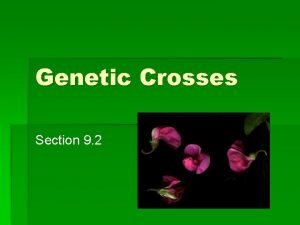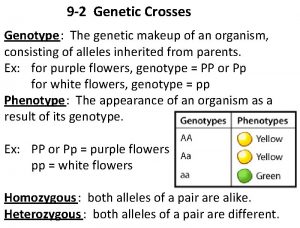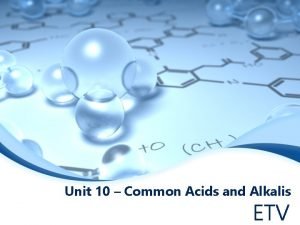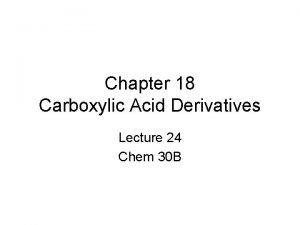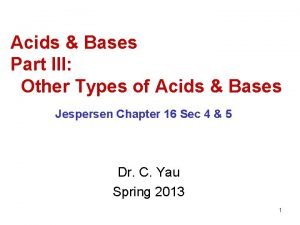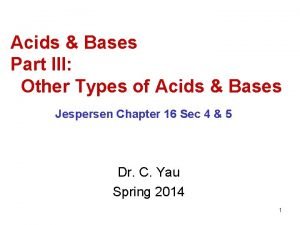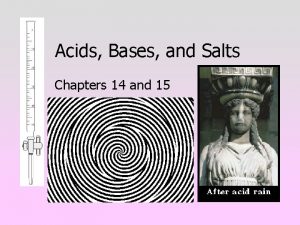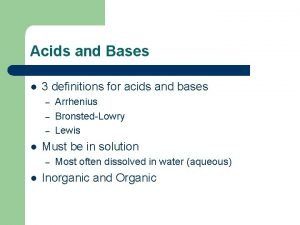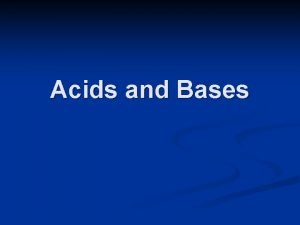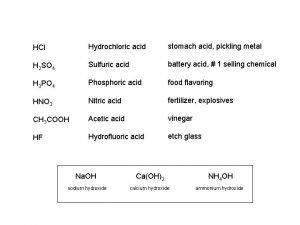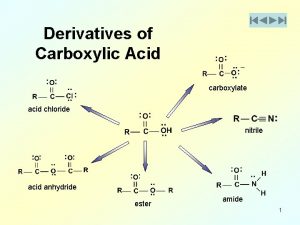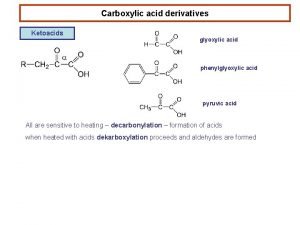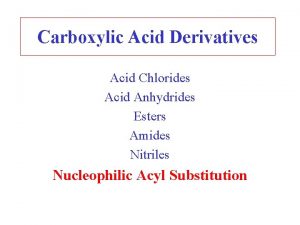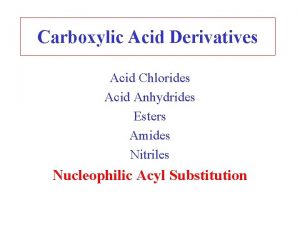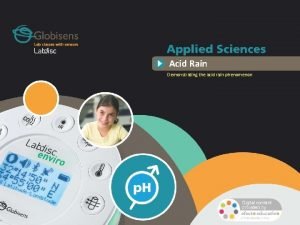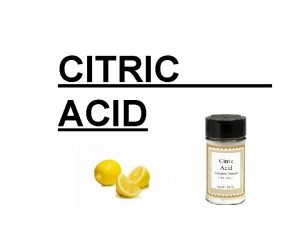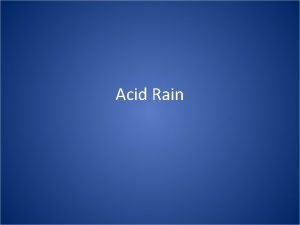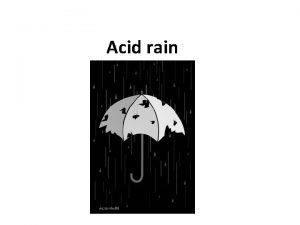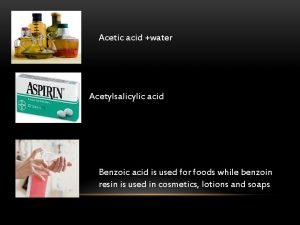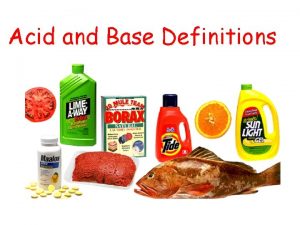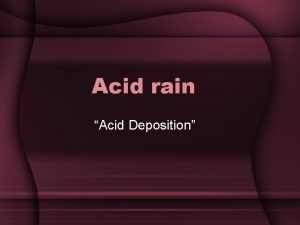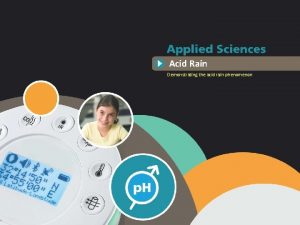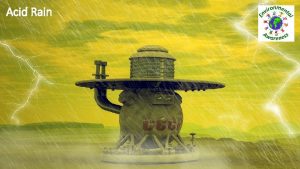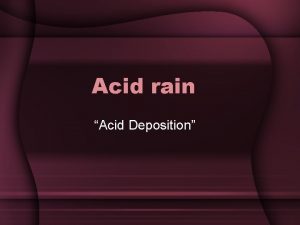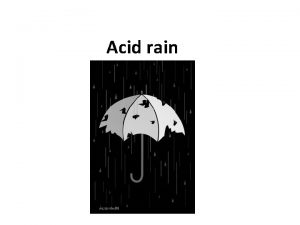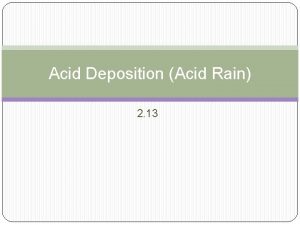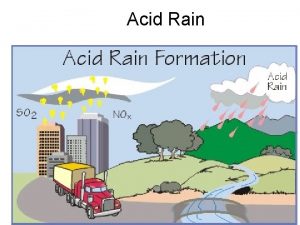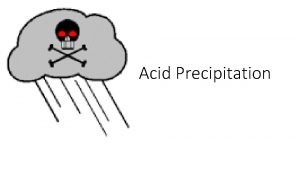Review Search for genetic materialnucleic acid or proteinDNA


























- Slides: 26

Review • Search for genetic material---nucleic acid or protein/DNA or RNA? • • Griffith’s Transformation Experiment Avery’s Transformation Experiment Hershey-Chase Bacteriophage Experiment Tobacco Mosaic Virus (TMV) Experiment • Nucleotides - composition and structure • Double-helix model of DNA - Watson & Crick • • Today’s Lesson Organization of DNA/RNA in chromosomes

Search for the genetic material: 1. Stable source of information 2. Ability to replicate accurately 3. Capable of change Timeline of events: • 1890 Weismann - substance in the cell nuclei controls development. • 1900 Chromosomes shown to contain hereditary information, later shown to be composed of protein & nucleic acids. • 1928 Griffith’s Transformation Experiment • 1944 Avery’s Transformation Experiment • 1953 Hershey-Chase Bacteriophage Experiment • 1953 Watson & Crick propose double-helix model of DNA • 1956 Gierer & Schramm/Fraenkel-Conrat & Singer Demonstrate RNA is viral genetic material.

Frederick Griffith’s Transformation Experiment - 1928 “transforming principle” demonstrated with Streptococcus pneumoniae Griffith hypothesized that the transforming agent was a “IIIS” protein.

Oswald T. Avery’s Transformation Experiment - 1944 Determined that “IIIS” DNA was the genetic material responsible for Griffith’s results (not RNA). Peter J. Russell, i. Genetics: Copyright © Pearson Education, Inc. , publishing as Benjamin Cummings.

Hershey-Chase Bacteriophage Experiment - 1953 Bacteriophage = Virus that attacks bacteria and replicates by invading a living cell and using the cell’s molecular machinery. Structure of T 2 phage DNA & protein

Life cycle of virulent T 2 phage:

Hershey-Chase Bacteriophage Experiment - 1953 1. T 2 bacteriophage is composed of DNA and proteins: 2. Set-up two replicates: • • Label DNA with 32 P Label Protein with 35 S 3. Infected E. coli bacteria with two types of labeled T 2 4. 32 P is discovered within the bacteria and progeny phages, whereas 35 S is not found within the bacteria but released with phage ghosts. 1969: Alfred Hershey

Gierer & Schramm Tobacco Mosaic Virus (TMV) Experiment - 1956 Fraenkel-Conrat & Singer - 1957 • Used 2 viral strains to demonstrate RNA is the genetic material of TMV

Conclusions about these early experiments: Griffith 1928 & Avery 1944: DNA (not RNA) is transforming agent. Hershey-Chase 1953: DNA (not protein) is the genetic material. Gierer & Schramm 1956/Fraenkel-Conrat & Singer 1957: RNA (not protein) is genetic material of some viruses.

Nucleotide = monomers that make up DNA and RNA Three components 1. Pentose (5 -carbon) sugar DNA = deoxyribose RNA = ribose (compare 2’ carbons) 2. Nitrogenous base Purines Adenine Guanine Pyrimidines Cytosine Thymine (DNA) Uracil (RNA) 3. Phosphate group attached to 5’ carbon

Nucleotides are linked by phosphodiester bonds to form polynucleotides. Phosphodiester bond Covalent bond between the phosphate group (attached to 5’ carbon) of one nucleotide and the 3’ carbon of the sugar of another nucleotide. This bond is very strong, and for this reason DNA is remarkably stable. DNA can be boiled and even autoclaved without degrading! 5’ and 3’ The ends of the DNA or RNA chain are not the same. One end of the chain has a 5’ carbon and the other end has a 3’ carbon.

5’ end 3’ end

James D. Watson & Francis H. Crick - 1953 Double Helix Model of DNA Two sources of information: 1. Base composition studies of Erwin Chargaff • indicated double-stranded DNA consists of ~50% purines (A, G) and ~50% pyrimidines (T, C) • amount of A = amount of T and amount of G = amount of C (Chargraff’s rules) • %GC content varies from organism to organism Examples: %A %T %G %C %GC Homo sapiens Zea mays Drosophila Aythya americana 31. 0 25. 6 27. 3 25. 8 31. 5 25. 3 27. 6 25. 8 19. 1 24. 5 22. 5 24. 2 18. 4 24. 6 22. 5 24. 2 37. 5 49. 1 45. 0 48. 4

James D. Watson & Francis H. Crick - 1953 Double Helix Model of DNA Two sources of information: 2. X-ray diffraction studies - Rosalind Franklin & Maurice Wilkins Conclusion-DNA is a helical structure with distinctive regularities, 0. 34 nm & 3. 4 nm.

Double Helix Model of DNA: Six main features 1. Two polynucleotide chains wound in a right-handed (clockwise) double-helix. 2. Nucleotide chains are anti-parallel: 3. Sugar-phosphate backbones are on the outside of the double helix, and the bases are oriented towards the central axis. 4. Complementary base pairs from opposite strands are bound together by weak hydrogen bonds. 5’ 3’ 3’ 5’ A pairs with T (2 H-bonds), and G pairs with C (3 H-bonds). e. g. , 5’-TATTCCGA-3’ 3’-ATAAGGCT-3’ 5. Base pairs are 0. 34 nm apart. One complete turn of the helix requires 3. 4 nm (10 bases/turn). 6. Sugar-phosphate backbones are not equally-spaced, resulting in major and minor grooves.



1962: Nobel Prize in Physiology and Medicine James D. Watson Francis H. Crick Maurice H. F. Wilkins What about? Rosalind Franklin

Organization of DNA/RNA in chromosomes Genome = chromosome or set of chromosomes that contains all the DNA an organism (or organelle) possesses Viral chromosomes 1. single or double-stranded DNA or RNA 2. circular or linear 3. surrounded by proteins TMV T 2 bacteriophage Prokaryotic chromosomes 1. most contain one double-stranded circular DNA chromosome 2. others consist of one or more chromosomes and are either circular or linear 3. typically arranged in a dense clump in a region called the nucleoid

Problem: Measured linearly, the Escherichia coli genome (4. 6 Mb) would be 1, 000 times longer than the E. coli cell. The human genome (3. 4 Gb) would be 2. 3 m long if stretched linearly. Solutions: 1. Supercoiling 2. Looped domains DNA double helix is twisted in space about its own axis, a process is controlled by topoisomerases (enzymes). (occurs in circular and linear DNA molecules)

More about genome size: C value = total amount of DNA in the haploid (1 N) genome Varies widely from species to species and shows no relationship to structural or organizational complexity. Examples T 4 HIV-1 E. Coli Lilium formosanum Zea mays Amoeba proteus Drosophila melanogaster Mus musculus Canis familiaris Equus caballus Homo sapiens C value (bp) 48, 502 168, 900 9, 750 4, 639, 221 36, 000, 000 5, 000, 000 290, 000, 000 180, 000 3, 454, 200, 000 3, 355, 500, 000 3, 311, 000 3, 400, 000

Eukaryotic chromosome structure Chromatin complex of DNA and chomosomal proteins ~ twice as much protein as DNA Two major types of proteins: 1. Histones abundant, basic proteins with a positive charge that bind to DNA (which is negatively charged) 5 main types: H 1, H 2 A, H 2 B, H 3, H 4 ~equal in mass to DNA evolutionarily conserved Histones leave the DNA only transiently during DNA replication. They stay with the DNA during transcription. By changing shape and position, nucleosomes allow RNA-synthesizing polymerases to move along the DNA. 1. Non-histones all the other proteins associated with DNA differ markedly in type and structure amounts vary widely

Packing of DNA into chromosomes: 1. Level 1 Winding of DNA around histones to create a nucleosome structure. 2. Level 2 Nucleosomes connected by strands of linker DNA like beads on a string. 3. Level 3 Packaging of nucleosomes into 30 -nm chromatin fiber. 4. Level 4 Formation of looped domains.


More about different types of DNA you should know about: • Centromeric DNA (CEN) Center of chromosome, specialized sequences function with the microtubles and spindle apparatus during mitosis/meiosis. • Telomeric DNA chromosome, consist of in DNA At extreme ends of the maintain stability, and tandem repeats. Play a role replication and stability of DNA.

Repeated DNA: • Unique-sequence DNA Often referred to as single-copy and usually code for genes. • Repetitive-sequence DNA May be interspersed or clustered and vary in size. SINEs short interspersed repeated sequences (100 -500 bp) LINEs long interspersed repeated sequences (>5, 000 bp) Microsatellites short tandem repeats (e. g. , TTA|TTA)
 What is the difference between genetic drift and gene flow
What is the difference between genetic drift and gene flow Genetic programming vs genetic algorithm
Genetic programming vs genetic algorithm Genetic programming vs genetic algorithm
Genetic programming vs genetic algorithm What is the difference between genetic drift and gene flow
What is the difference between genetic drift and gene flow What is the difference between genetic drift and gene flow
What is the difference between genetic drift and gene flow Genetic vocabulary review
Genetic vocabulary review Section 9-2 genetic crosses
Section 9-2 genetic crosses 9-2 genetic crosses
9-2 genetic crosses 9-which acid is not considered a strong acid?
9-which acid is not considered a strong acid? Non acid fast bacteria
Non acid fast bacteria Acid anhydride and alcohol
Acid anhydride and alcohol Example of acid-fast bacteria
Example of acid-fast bacteria Identifying lewis acids and bases practice
Identifying lewis acids and bases practice Lewis acid bronsted acid
Lewis acid bronsted acid Is sr(oh)2 a base
Is sr(oh)2 a base Hcl lewis acid or base
Hcl lewis acid or base Acid proton donor or acceptor
Acid proton donor or acceptor Stomach acid vs battery acid
Stomach acid vs battery acid Acid chloride
Acid chloride Fspos
Fspos Novell typiska drag
Novell typiska drag Tack för att ni lyssnade bild
Tack för att ni lyssnade bild Ekologiskt fotavtryck
Ekologiskt fotavtryck Shingelfrisyren
Shingelfrisyren En lathund för arbete med kontinuitetshantering
En lathund för arbete med kontinuitetshantering Särskild löneskatt för pensionskostnader
Särskild löneskatt för pensionskostnader Tidböcker
Tidböcker






